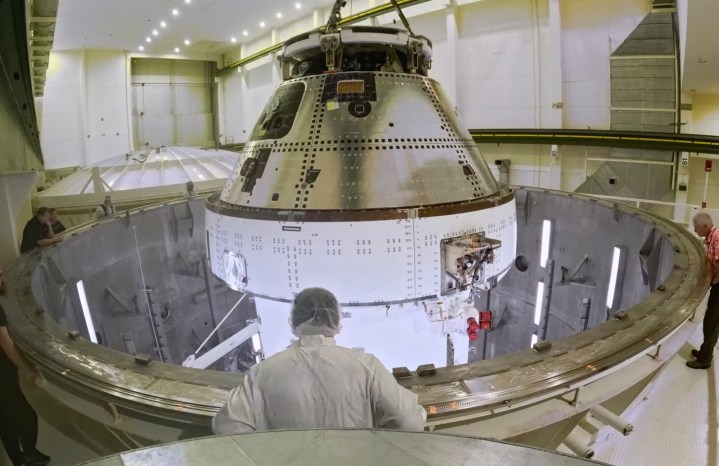

NASA has started testing the Orion spacecraft that will take four astronauts on a voyage around the moon in the Artemis II mission currently scheduled for 2025.
The space agency shared a video (below) showing the Orion capsule being transported to an upgraded vacuum chamber inside the Operations and Checkout Building at NASA’s Kennedy Space Center in Florida. There it will undergo electromagnetic compatibility and interference testing.
Over the summer, engineers will return Orion to the chamber for a test that closely simulates the conditions in the vacuum of deep space. A new control room that overlooks the upgraded chamber contains several workstations and communication equipment, NASA said in an article that offered some background information on the agency’s work to prepare the capsule for flight. Other upgrades to the facility have been carried out in preparation for the Orion tests.
Commenting on the start of testing for the Artemis II spacecraft, NASA’s Marie Reed said: “It was an amazing opportunity to lead a diverse and exceptional team to reactivate a capability for testing NASA’s next-generation spacecraft that will carry humans back to the moon.”
Another Orion spacecraft has already flown to the moon and back. The uncrewed Artemis I mission was launched by NASA’s next-generation SLS rocket and sent the Orion on a flyby of the moon in its first flight test. NASA’s Artemis II mission will follow the same route, sending four crewmembers around the moon, getting as close as 80 miles to the surface. The aim of the approximately 10-day voyage is to confirm the safety of the spacecraft for further crewed lunar missions.
A smooth Artemis II flight will pave the way for the highly anticipated Artemis III mission that will put the first woman and first person of color onto the lunar surface. Artemis III is currently scheduled for 2026. In this mission, the crew will transfer from the Orion spacecraft to SpaceX’s Starship HLS vehicle, which is currently under development. The Starship will then descend to the lunar surface for the first crewed human moon landing since the final Apollo mission in 1972.
Editors’ Recommendations






